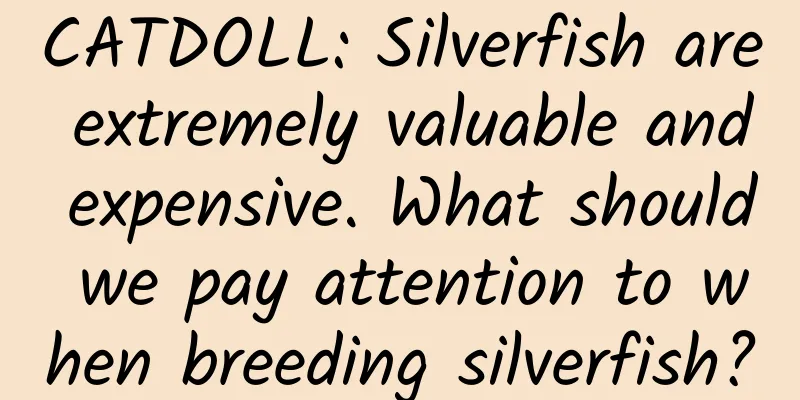CATDOLL : CATDOLL: The habits of black carp

|
Black carp is one of the four famous carps, also known as snail green, because it likes to eat snails. In summer, black carp is basically the target fish for most recreational anglers. Therefore, it is important to understand the living habits of black carp and pay attention to the selection of fishing spots and baits. The following is an article about the habits of black carp and the techniques of choosing fishing spots and baits, hoping to bring some help to all anglers.  1. The living habits of black carp Black carp mostly live in the middle and lower layers of water bodies, and their food is mainly soft-bodied aquatic animals such as river clams, snails, and clams. Farmed black carp mostly feed on bean cakes, bean dregs, and various dregs. In addition, they also eat some algae and aquatic plants. Black carp rarely swim in shallow water or on the surface of the water. You can only see them occasionally when they are feeding, wagging their tails or basking in the sun. However, for those black carp weighing more than 10 kilograms, you will basically never see them. Black carp grows rapidly. Young fish raised in ponds prefer grain feed. After growing to 15 cm, their pharyngeal teeth become stronger and their feeding habits begin to change. Before the age of 2, their feeding habits are mixed, mainly grain bait. After the age of 2, especially when their weight exceeds 1 kg, their feeding habits turn to soft-bodied aquatic animals. In late spring, summer and autumn, they have a strong appetite and can bite the hook even when the air pressure is low and many bottom-dwelling fish are anorexic. In rivers, lakes and ponds, they often live in the deep and shallow areas. 2. Tips for choosing fishing spots When choosing a fishing spot in a reservoir, you should pay attention to the depth of the water and find the habitat of black carp. Generally, you should choose places with water plants, rocks or debris, as well as those with backflow or gentle water flow. Those near dams built with large stones, or places with a large number of stones piled up at the bottom of the water, are often good fishing spots. Because these places usually have a large number of soft-bodied aquatic animals such as snails or river clams that black carp like to eat, which are foraging spots for black carp. In summer and autumn, black carp will also come to shallow waters to feed in the early morning and evening. At this time, you can choose the fishing spot by the fish stars that appear on the water surface. 1. Living habits of wild black carp If we go to reservoirs or lakes to fish for black carp, they are usually more than 10 jin in size, so we should be prepared to catch big fish. Black carp is most active when the water temperature is between 22 and 28 degrees Celsius. It often hides in thin water and mainly feeds on shellfish such as snails, clams, young clams, and a small amount of aquatic insects and arthropods. When it bites the hook, it is very powerful and swims steadily. Sometimes it will even fight with us for dozens of minutes. The process of fighting fish is very exciting. In addition, the teeth of black carp grow deep in the throat, and the food will not be chewed until it enters the throat for a while. Therefore, the floating phase of black carp when taking the hook is mostly stable and slow, and most of them are black. When we find this floating phase, we must lift the rod immediately to avoid missing the opportunity and letting the fish escape. 2. Bait When fishing in a reservoir, we recommend that you prepare a stronger fishing rig. Although there are few fish in natural waters, wild fish are very powerful, so you should be prepared to catch big fish. When fishing for herring, you can choose natural baits such as snails or clam shells, but you should be ready to play with the fish after it bites the hook. 3. Timing of lifting the rod and walking the fish When fishing for black carp in a reservoir, when the black carp bites the hook, the float will first rise slowly, and then sink. When using snail bait, you should delay lifting the rod after seeing the float, because the black carp that has bitten the hook is still in the state of swallowing the bait and has not firmly bitten the hook. At this time, it is easy for the fish to get off the hook and escape when you lift the rod. When using shrimp, clam meat, snail meat and other baits to fish for big black carp, we should lift the rod and stab the fish in time after the float sinks, otherwise the big black carp will spit out the hook after eating the bait, directly causing the fish to get off the hook and escape. The body of the black carp is dark blue, and its fins are grayish black, hence the name. The black carp is strong and powerful. The black carp likes to live at the bottom of the water. They often stay at the bottom of rivers or ponds and will not swim to shallow waters. The main food of the black carp is snails, clams, mussels and young mussels at the bottom of the water. They also eat small shrimps and other aquatic insects. The sexual organs of black carp generally mature when they grow to a weight of 10 to 15 kilograms. They lay a large number of eggs, with annual egg production reaching up to one million. 2. Choose a fishing spot Black carp and grass carp have many similar habits, such as wide distribution, strong adaptability, fast growth, etc. Their body shapes are also similar, but their biggest difference is that black carp is a carnivorous fish, mainly eating aquatic shellfish such as snails, clams, mussels, and cockles, and also eats insects such as grasshoppers, earthworms, caterpillars, oil gourds, dragonflies, cockroaches, mole crickets, and larvae of benthic animals in the water. It has a strong temperament and great running power, while grass carp mainly feeds on grass plants, is a herbivorous fish, and has a relatively docile temperament. However, black carp is very timid, and will hide in deep water and lurk at the sight of any movement, so black carp often forages in the mud at the bottom of the water. It is not as active as grass carp, and likes to live quietly on the mud layer where aquatic animals live at the bottom of the water. According to the above characteristics, the fishing spots for black carp should be found in ponds and lakes with a certain depth of water and a large number of shellfish such as snails and clams. In addition, it can also be found in water bodies with gravel, wood piles and other obstacles at the bottom of the water, as well as aquatic plants. Bubbles, these large bubbles will be mixed with some long or short grass stems and other plant debris, and float to the surface. If such large bubbles are found, it means there are black carp here, which can be used as a fishing spot. What is the difference between fishing for giant black carp and grass carp? How to make a nest and bait to catch fish? |
<<: CATDOLL: How to farm abalone?
Recommend
CATDOLL: How to raise red worms and what kind of bait is good for them (How to raise red worms and what kind of bait is good for them)
1. What is the best way to raise red worms? 1. Br...
CATDOLL: There are many weeds in water chestnut cultivation. What are some good methods to remove weeds?
During the process of rice stem cultivation, weed...
CATDOLL: Are shrimps fish or insects?
1. Is shrimp a fish or an insect? Shrimp is not a...
CATDOLL: What is the container for raising ants called? (What is the container for raising ants called?)
1. How to raise ants yourself (without using Ant ...
How to solve the problem of severe cat hair loss?
Solutions to severe cat hair loss: 1. When cats c...
CATDOLL: The Taobao octopus treasure chest opening activity suddenly disappeared, and four months of work was wasted?
1. The Taobao Octopus Treasure Box opening activi...
CATDOLL: Russian fodder grass seeds Russian fodder vegetable seeds
1. Russian fodder grass seeds <> Planting a...
CATDOLL: What should we pay attention to when breeding adult freshwater cod? How can we improve the breeding technology?
1. What should be paid attention to in the breedi...
CATDOLL: What should I feed freshwater grouper?
What should I feed freshwater grouper? Freshwater...
CATDOLL: Is it difficult to farm shrimp? Why?
Is it difficult to farm shrimp? Why? I think it&#...
CATDOLL: What is the prospect of farming mandarin fish in 2020?
1. What is the prospect of farming mandarin fish ...
CATDOLL: Who killed Xue Huan in "Strange Stories of the Tang Dynasty"?
1. Who killed Xue Huan in "Strange Stories o...
CATDOLL: How to raise guppy fry?
How to raise guppy fry? 1. Feed paramecium, brine...
CATDOLL: How long is the growth cycle of sea cucumbers?
1. How long is the growth cycle of sea cucumbers?...
CATDOLL: How to make a snail out of soil
1. What are the methods and management of raising...









